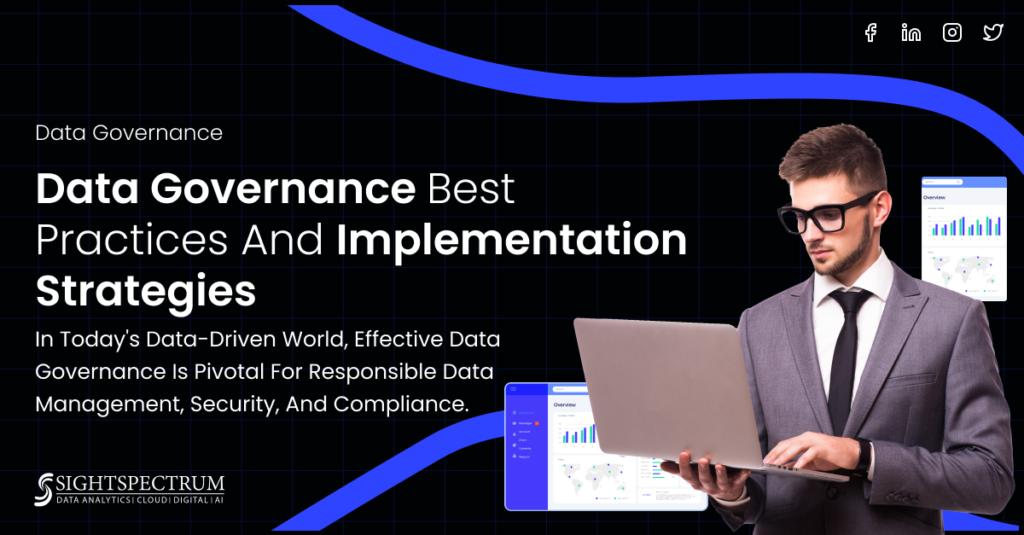
Introduction: In the rapidly evolving landscape of data-centric enterprises, the concept of data governance has become integral. Data governance involves the comprehensive management of data, ensuring its accessibility, accuracy, security, and compliance with regulatory standards. This blog will delve into the essence of data governance, elucidate best practices and strategies for its implementation, and culminate in highlighting the pivotal role it plays in the contemporary business environment.
What is Data Governance? Data governance constitutes a holistic strategy for overseeing an organization’s data assets. It encompasses the formulation of processes, policies, and responsibilities designed to maintain data accuracy, availability, security, and effective utilization. Core components include the management of data quality, metadata, data security, and compliance with regulations such as GDPR and HIPAA.
Data Governance Best Practices:
Establish a Data Governance Framework: Effective data governance begins with a well-defined framework that outlines objectives, goals, roles, responsibilities, and processes. This framework sets the stage for a structured and coordinated approach to data management.
Data Quality Management: Maintaining high data quality is paramount. This involves the implementation of standards and metrics for data quality, along with regular assessments and cleansing activities to ensure accuracy and reliability.
Metadata Management: Centralized metadata management is key to understanding and utilizing data effectively. Establishing a repository for consistent and standardized metadata across the organization ensures coherence and clarity.
Data Security and Privacy: Robust security measures are imperative to protect sensitive data. Compliance with data protection regulations, coupled with encryption protocols, safeguards organizational data from unauthorized access and breaches.
Stakeholder Engagement: Engaging key stakeholders from various business units is essential. Fostering a culture of data ownership and accountability ensures that data governance is embraced throughout the organization.
Continuous Monitoring and Improvement: Implementing monitoring tools to track data quality and usage is crucial. Regular reviews and improvements to data governance services ensure adaptability and ongoing effectiveness.
Data Governance Service Offerings:
Data Governance Consulting: Professional consulting services can assess an organization’s current data governance maturity and develop a tailored strategy. This helps align data governance initiatives with broader organizational objectives.
Data Quality Management Services: Dedicated services focus on implementing data profiling and cleansing activities. Ongoing monitoring ensures sustained data quality and facilitates continuous improvement.
Metadata Management Solutions: Deploying specialized tools for metadata management, organizations can achieve a centralized repository and provide training on metadata best practices, fostering a comprehensive understanding across the workforce.
Compliance and Security Services: Conducting compliance assessments and implementing security measures are vital services. This ensures that organizations adhere to regulatory standards, protecting data integrity and user privacy.
Training and Education: Training programs on data governance best practices and broader education initiatives help employees understand the significance of their roles in data stewardship. This promotes a culture of data responsibility across the organization.
Conclusion: In conclusion, the implementation of effective data governance is paramount for organizations seeking to leverage the full potential of their data. By adopting best practices and availing data governance service offerings, businesses can establish a robust foundation for data-driven decision-making. In an era defined by the transformative power of data, investing in comprehensive data governance company is not merely strategic but essential for sustained success in the digital landscape.